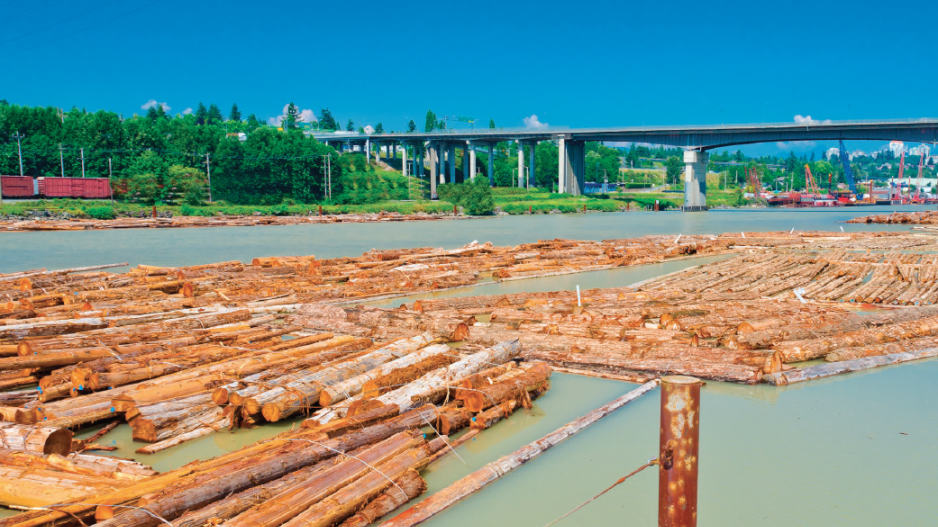Last week, as expected, the U.S. Department of Commerce levied preliminary anti-dumping duties, averaging 7%, on Canadian softwood lumber exports.
When combined with earlier countervailing duties, it increases the cost of exporting lumber to the U.S. by 27% to 31%, depending on the company and region. As Canada’s largest exporter of lumber to the U.S., B.C. producers will be hardest hit.
In a war that never seems to end, Canada is trying for the fifth time since 1982 to negotiate a temporary ceasefire in the form of a negotiated agreement.
Such negotiations have worked before. But a better, more permanent solution would be to address U.S. grievances by reforming B.C.’s stumpage system, said Benjamin Dachis, associate director of research at the C.D. Howe Institute think tank.
The central grievance against Canada’s forest industry is that it is subsidized through the stumpage rates charged to harvest Crown timber – rates that the U.S. argues are artificially below market values.
In a brief to federal and provincial ministers of forestry and trade, Dachis recommends moving from a flat stumpage fee to an auction system and a tax on profits.
“One of the things that the government can do is they get out of this claim of subsidization,” he said.
Most of the working forests in Canada are Crown-owned, whereas in the U.S. they are privately owned. Forestry companies there pay a market-based price through auctions for trees cut on private land.
Dachis said the reforms he is proposing not only would address the principal grievance Americans have against the Canadian industry, but also would raise more revenue for the government.
“[With] companies … making massive amounts of profit because we are undercharging on our stumpage fees, we want to make sure that we, as taxpayers, get our fair share of that total amount,” Dachis told Business in Vancouver.
In B.C., companies pay stumpage fees and a logging tax for the right to harvest trees on Crown land. Stumpage rates are fees charged on a per-cubic-metre basis. The fees vary, depending on the area and the species of tree cut. But they are flat fees that are not reflective of real market values, Dachis argued.
Under the model Dachis is proposing, cutting rights would be auctioned, with the highest bidder winning the right to harvest a certain volume of trees.
“The auction is a great way of getting a lot of this revenue up front,” he said.
In addition to raising revenue through the auction, the government would tax the companies’ profits on the trees they harvested, after input costs are deducted. It is a model similar to the one used for other Crown resources, like minerals and oil and gas.
Dachis added that the auction should be open to any bidder, including U.S. companies and other firms outside of Canada.
“It should absolutely be open to anyone,” he said. “That would be absolutely one of the core principles that I recommend.”
B.C. already allows foreigners to buy logs, on a limited basis, in the coastal forestry sector. But the raw logs that are exported to markets such as China have to be surplus to the needs of B.C. mills, and represent only about 7% of the coastal timber harvest.
Opening up the whole province to auction would never get public or political support, said Harry Nelson, assistant professor of forest resource management at the University of British Columbia.
“Politically, whatever government proposed that would be out of office,” Nelson said. “Effectively it would be viewed as quasi-privatization.”
Nelson said B.C. already has a limited auction system that is used to establish stumpage rates that are supposed to reflect actual market value.
While much of the timber in B.C. is allocated under long-term tree farm licences, timber that isn’t locked up in those licences (about 20% of the provincial allowable annual cut) is auctioned through the BC Timber Sales program, established in 2003. The prices the government gets through those auctions set the stumpage rate for the rest of the province.
That still hasn’t stopped U.S. lumber producers from claiming the rates charged in B.C. are artificially low. Susan Yurkovich, president of the BC Lumber Trade Council, said she thinks that no matter what B.C. or Canada does, the industry south of the border will always complain.
“This is really about protectionism,” she said. “This is about constraining supply of Canadian lumber to push prices up. In my view, they would find something else to complain about.”
John Rustad, provincial minister of forests, lands and natural resource operations, said the best solution is to try to reach a new negotiated settlement with the U.S. and continue to expand foreign markets outside of the U.S.
“We know that that has had a huge positive impact for our forest industry,” he said. “We think there’s room to expand that.” •




